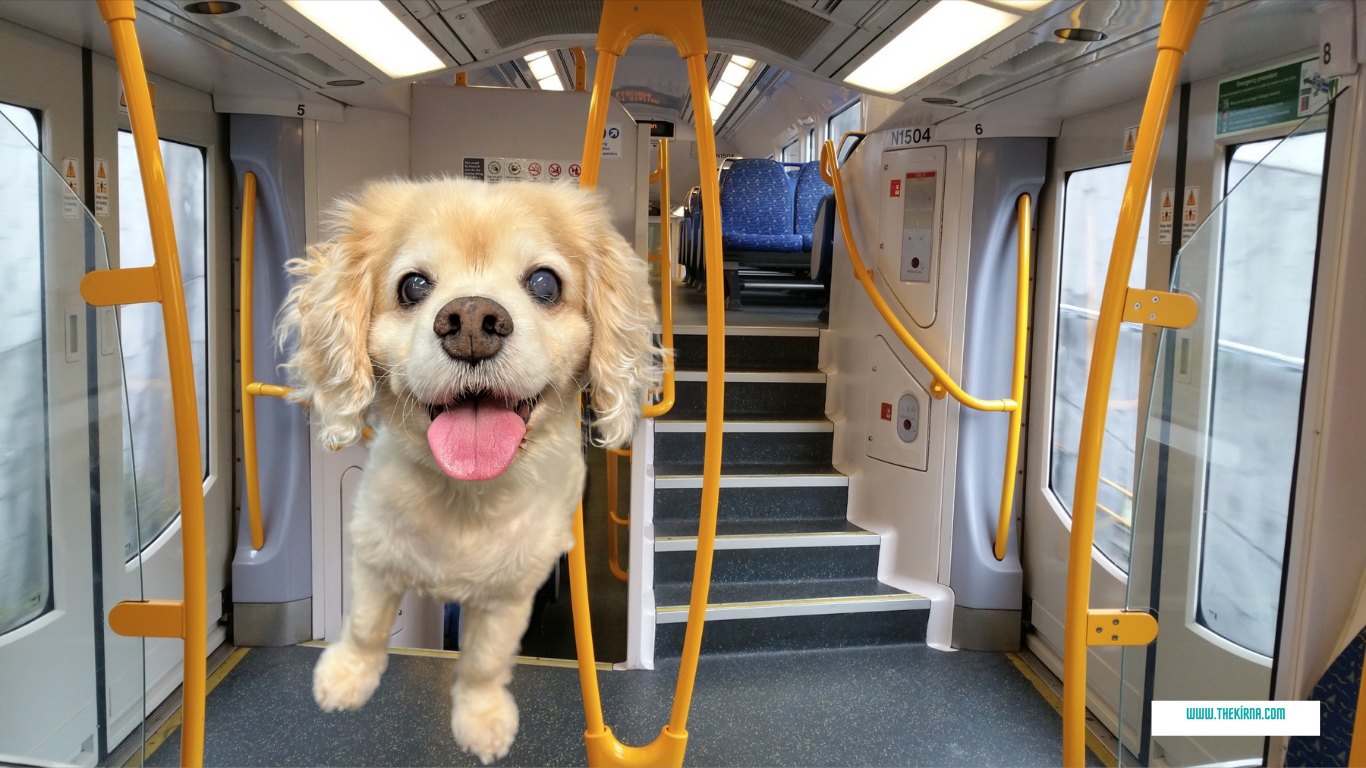Are Dogs Allowed on Buses? It’s a simple question many dog owners ask before venturing out without their car. Whether you’re planning a city adventure, a vet visit, or just a trip across town, knowing if your furry friend can hop on board is a genuine practical concern. The answer, however, isn’t always straightforward.
Bus policies regarding our canine companions vary significantly depending on where you live, the specific bus company operating the route, and even the type of dog you have. Navigating this patchwork of rules can feel confusing.
This guide aims to shed light on common regulations, service animal rights, and helpful tips to make travelling by bus with your dog a smooth and stress-free experience for everyone involved. Let’s figure out how you and your pup can journey together.
Rules for carrying pet dogs on buses: Policies vary by country
Want to take your beloved dog on a bus trip? This question (“Are dogs allowed on buses?”) comes to the mind of many pet owners. The answer is not so simple because the rules depend entirely on where you are travelling. Bus companies and public transportation systems worldwide have different policies regarding pets, especially dogs.
Europe (e.g. UK, Germany): Small dogs are usually allowed on buses in many European countries, often in carriers or crates, and larger dogs are allowed to wear a mask and leash. In many places, it is mandatory to buy a reduced price ticket or a “dog ticket” for the dog. In some countries, such as Germany, dogs are not allowed to sit on seats and must stay on the floor.
USA (intercity buses such as Greyhound): Large bus companies in the US, such as Greyhound, usually only allow service dogs. Emotional support animals or regular pet dogs are not allowed, although some urban local bus services may have their own policies.
Japan: In Japan, small dogs are often only allowed in closed carriers, and the carrier is a set size. The dog must not leave the carrier. Larger dogs may be more strict or prohibited.
India: Rules for pet dogs on buses in India are very restrictive and vary from reduced-priceplace to place. Interstate/intra-city state transport buses (e.g. STC, RTC):
- General pet dogs are strictly prohibited on most state transport corporation buses.
- This rule is made for reasons of hygiene, safety of other passengers, and possible allergies or fright.
- Only certified service dogs (e.g. guide dogs for the blind) may be allowed under special circumstances, and that too with prior permission.
- Private bus operators: Some private luxury or Volvo bus companies may sometimes allow small dogs in a carrier and for an additional fee (pet fare).
- This is entirely up to company policy and driver/conductor approval. Never trust without asking and written confirmation.
- Urban city buses (e.g. BEST Mumbai, BMTC Bengaluru):*Most urban public bus services also do not allow normal pet dogs. The policy on service dogs may vary from city to city, but normal pets are banned.
- Important condition (even if allowed): The dog must have a complete and valid rabies vaccination. The dog should always be muzzled and on a short leash, or in an enclosed crib. He should not be allowed to sit on a seat.
Is your dog suitable for travel? Consider temperament and behavior
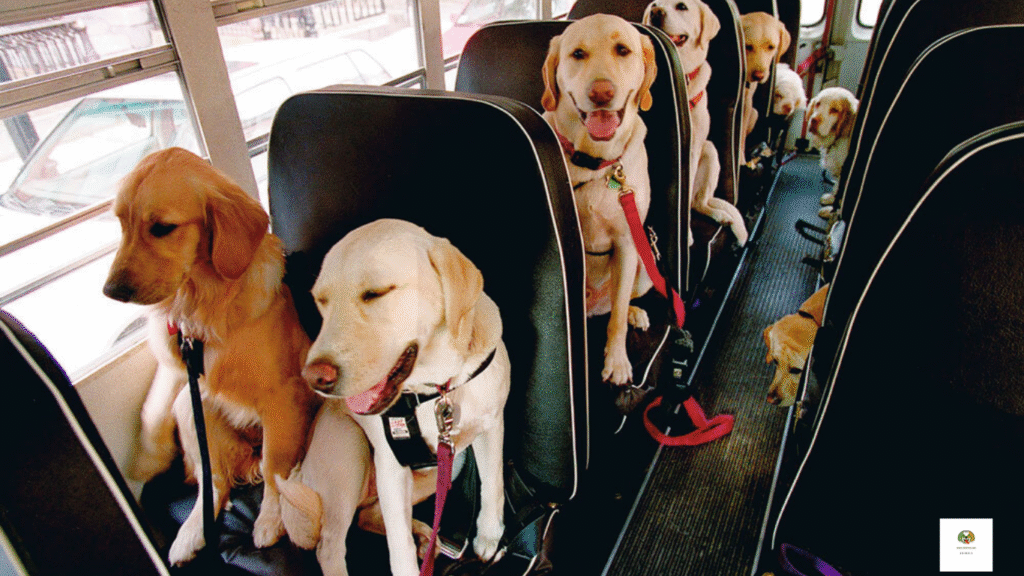
Dear pet parents, allowing dogs on buses is an important question, but it is even more important to ask: Is your dog really ready for this trip? More than just following the rules, it is about your fur-baby’s temperament and behavior. Is he comfortable with new places, strangers, loud noises, and a moving bus?
If your dog is generally calm, confident, and easy to adjust to, travelling can be a breeze. But if he is easily travelling, barks excessively, or becomes anxious or aggressive around unknown people/animals, then bus travel can become stressful and inconvenient for others.
His safety and comfort are paramount. Assess your dog’s true nature honestly – can he really handle the stress of traveling? This consideration can make the trip safe and enjoyable for both of you. That is what being a responsible pet parent is all about!
Differences in rules for small vs large dogs – know what changes
Planning a bus trip with your dog? Good news! Many bus companies do allow dogs, but there are important rules to know. These rules almost always depend on your dog’s size, so it’s crucial to check before you hop on.
For smaller pups: You’ll usually need a secure, well-ventilated pet carrier (like a crate). This carrier must be small enough to fit safely on your lap or under the seat in front of you. Your dog needs to stay calm, inside their carrier, and under your control for the whole journey. Leashing them inside the bus generally isn’t an option.
For bigger dogs: They’ll typically need to be on a strong leash and wear a properly fitted muzzle. They must stay on the floor in the passenger area (not on a seat!) without blocking aisles or bothering other passengers. Be prepared: some bus lines might charge an extra ticket fee or require you to notify them ahead of time for a larger dog.
| Country | Dogs Allowed? | Conditions/Rules | Type of Dogs Allowed |
|---|---|---|---|
| 🇺🇸 USA | ✅ Yes | Must be in carrier or leashed. Service dogs always allowed. | Small pets in carriers, Service dogs |
| 🇬🇧 UK | ✅ Yes | Dogs must be well-behaved and on a lead. Discretion of driver applies. | All, subject to driver approval |
| 🇨🇦 Canada | ✅ Yes | Must be leashed or in carrier. Some cities allow only non-peak hours. | Small dogs preferred, Service dogs |
| 🇩🇪 Germany | ✅ Yes | Muzzle may be required; leash compulsory. | All sizes with safety rules |
| 🇦🇺 Australia | ⚠️ Partially | Varies by state. Most allow small pets in carrier only. | Small pets in enclosed carriers |
| 🇮🇳 India | ❌ Mostly No | Not allowed in general public buses. Service dogs may be permitted in rare cases. | Service dogs only (limited) |
| 🇫🇷 France | ✅ Yes | Leash and muzzle required for large dogs. Ticket may be required. | All sizes, rules vary by region |
| 🇯🇵 Japan | ✅ Yes | Dogs must be in closed pet carrier. No barking allowed. | Small pets in carriers only |
| 🇧🇷 Brazil | ✅ Yes | Up to 10kg, inside proper transport box. Vaccination proof may be needed. | Small pets only |
| 🇸🇬 Singapore | Partially | Only guide dogs allowed on buses. No pet dogs permitted. | Guide/service dogs only |
The golden rule? Always double-check the pet policy of the specific bus company you’re using! Rules can be surprisingly different depending on where you are, the type of bus, and the company itself. With a little preparation and the right info, you and your furbaby can have a smooth bus ride together.
Pre-Travel Preparation: Important Documents and Safety Tips
Bus travel experience in US and other countries is unique but advance preparation is a must to make your trip safe and smooth. Prioritize
Required Documents:
- Passport & Visa: Valid and valid for a long time.
- Photo ID: Driving license (if renting a car) or any other government ID.
- Travel Insurance: Covers medical emergencies and trip cancellation.
- Health Certificate: COVID-19 or other mandatory vaccination records (check India’s latest requirements).
- Bus Ticket/E-Voucher: Copy of online booking. Always carry a digital copy (phone/cloud) and a few printed copies.
Safety Tips: Be cautious: Keep an eye on your bags/valuables in the crowd.
Stay connected: Ensure an Indian SIM card or internet roaming (for maps, communication). Share plans: Tell family/friends your trip details and accommodation.
Reliable transport: Book buses only from authorised bus stands or trusted apps (like RedBus).
Emergency: The US emergency number is 911. Save it in your phone.
Essential Equipment for Dogs on Bus Travel: Leash, Muzzle, Crate and ID Tags
While many bus companies permit dogs onboard, this is not universal and hinges entirely on the operator’s specific rules and local laws. Travelling with your dog typically requires adherence to certain equipment standards for safety, hygiene, and consideration of fellow passengers.
Following these requirements helps protect your pet and ensures a smoother, more relaxed journey for everyone to guarantee a safe and hassle-free bus trip with your canine companion. Ensure you have these four key items prepared:
1. Leash: An absolute necessity. Maintain control with a short, secure leash at all times. This prevents your dog from approaching others or the driver and stabilises them during bus movements like sudden stops.
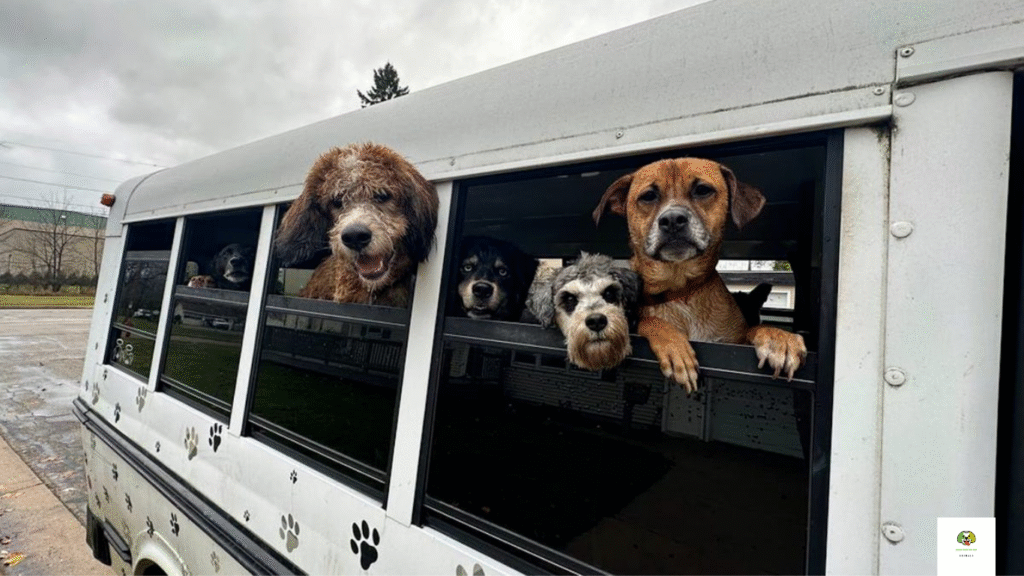
2. Muzzle: Often mandated, especially for larger dogs or breeds with unknown temperaments. Muzzling is a standard safety precaution for passengers and staff, even if your dog is typically docile. Acclimate your dog to wearing one before the trip.
3.Carrier/Crate: A secure, well-ventilated carrier or crate is highly recommended, particularly for small dogs. Containing them keeps them safe, occupies minimal space, and allows you to keep them close. While less feasible for large dogs, always verify the policy.
4.ID Tag: A collar tag displaying current contact details is vital. Should an unexpected separation occur (like your dog getting loose), this tag provides the fastest way for reunification. Consider a microchip as an additional safeguard.
Crucial Reminder: Always consult the bus company’s official website or contact them directly before your journey. Verify their current pet policy, including any applicable fees, breed restrictions, or size limitations. Proper preparation with the right equipment makes bus travel enjoyable for both you and your furry friend!”
Comparison of bus rules in Europe, America, Asia and other regions
Planning a bus trip with your furry friend? Dog policies vary significantly worldwide! Across Europe, regulations are often welcoming. Countries like the UK, Germany, and France typically permit small dogs (securely contained in carriers) and sometimes neutered large dogs onboard buses, frequently at a discounted fare. In North America, rules differ locally.
Major hubs like New York City restrict bus travel to small dogs in carriers, though smaller municipalities might have more lenient approaches. Asian policies tend to be stricter. For instance, Japan prohibits dogs on Shinkansen bullet trains, while local buses or trams may accept them in small carriers.
In India, non-service dogs are generally barred from public buses. Similarly, Australia and New Zealand largely exclude pets from public bus services, although exceptions might be possible with private or tour operators.
Crucial advice: Always verify the rules directly with the local transit authority’s website or customer service before your journey, and ensure you have an appropriate, secure carrier for your pet.
Keywords: dog travel regulations, bus pet policies, international transport rules, Europe dog-friendly transit, Asia bus pet bans, US dog transport.
How to maintain coordination with passengers and staff when transporting pet dogs on bus
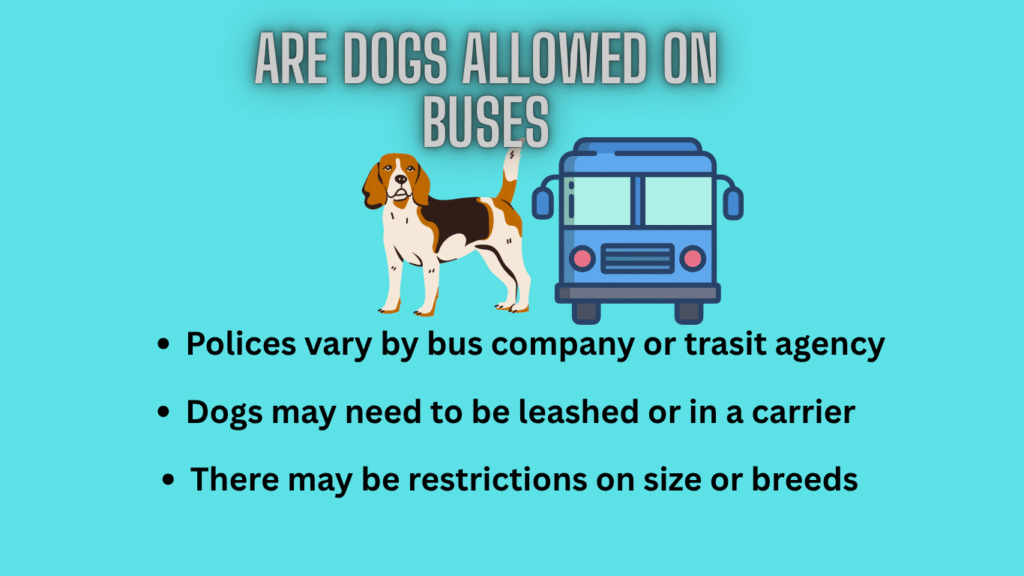
It is your responsibility to ensure that your beloved pooch enjoys the bus ride and maintains the respect of fellow passengers and staff.
First of all, keep your dog tightly leashed and muzzled – this provides a sense of security for those who may feel scared or uncomfortable. Avoid rush hour; choose an empty or sparsely packed bus so your dog doesn’t get tangled in anyone’s legs. Put your dog on your lap or on the floor, near the seat, not on the seat itself.
Bringing a small blanket or basket can help prevent crowding and mess. Do not let other passengers, especially children or those who are fearful, touch the dog without asking. Follow the instructions of the staff – if they point to a particular seat or area, respect that.
Keep an eye on your dog during the journey and try to calm it down if it gets restless or barks. A little caution and consideration for other people’s feelings can make the journey enjoyable for everyone. Remember, your support helps us continue to allow pets on buses!
Tickets, fees and registration required for dogs on public transport
Dreaming of travelling by bus with your beloved dog? Know that the rules for allowing dogs on buses are not the same all over the world! It depends entirely on your place of travel (country/city) and the policies of the local transport company.
Tickets, fees and registration requirements for dogs on public transport.
Tickets/fees: Many countries (such as many parts of Europe) charge separate tickets or small fees (sometimes a fraction of the human fare) for dogs. Small dogs (in pet carriers) may be free in some places.
Registration/documents: It is often mandatory to show a valid rabies vaccination certificate. A “pet passport” or local license may also be required in some European countries or US cities.
Safety rules: Larger dogs are required to wear a sturdy leash and muzzle in most places. Smaller dogs often need to be kept in a closed pet carrier. The most important tip? Be sure to check the rules on the local bus company website for that city/country or contact them directly before you travel. A little preparation can go a long way in ensuring your furry companion has a safe and comfortable trip!
What to do if not allowed on the bus? Alternative transport options
Want to roam around the city with your beloved dog, but the question comes up: Are dogs allowed on buses? In most cases, the answer is No. Most public bus services (like DTC, BEST or other city buses) Do not allow pets, especially dogs, due to safety, hygiene or objections from passengers. This rule applies to everyone from small puppies to big dogs.
So if taking your companion on the bus is a no-no, don’t panic! Some alternative options can help you:
- Auto-rickshaw: The easiest option! Most auto walas allow your dog to ride, especially if it is calm and close to you. Small dogs can be kept on the lap or in a carrier.
- Ride-sharing apps (Ola/Uber): One can find Pet-friendly options (like UberPet) on apps like Ola and Uber. These cost a little extra, but drivers are already prepared for pet passengers. It’s a must to ask the driver when booking a regular cab.
- On foot or bicycle: This is the best option for short distances. Walk with your dog on a leash and harness or in a secure carrier/bag.
- Hiring a personal car/cab: If the trip is long or there is a lot of luggage, hiring a cab for the whole day or using your own car may be the most comfortable.
Remember: When using any of these options, always keep your dog under control (use a leash/harness/carrier), pay attention to cleanliness, and get the driver’s permission. With a little effort and planning, you and your fur baby can travel safely and comfortably! You’re not alone, this is a common challenge for pet parents, and hopefully more transportation options will become pet-friendly in the future.
Tips to Reduce Stress During Travel: How to Keep Your Pet Comfortable
Traveling with your furry family member sounds great, but figuring out bus rules can be tricky. Generally, public buses (city or state-run) don’t allow dogs. This is mainly for the safety, cleanliness, and comfort of all passengers.
Don’t lose hope! Some private tour buses or special pet-friendly shuttle services might welcome your pup. Always check directly with the bus company first, as their policies vary. They might require advance notice, have specific rules, or charge an extra fee. Your very first step should be looking up your local transport rules.
Making the Journey Smoother for Your Pup:
Travel adventures with your dog can be wonderful, but new environments can also stress them out. Here’s how to help them feel relaxed and secure:
- Bring the Comforts of Home: Pack their favorite bed, a well-loved toy, or a cozy blanket. Familiar smells are incredibly soothing.
- Pre-Trip Playtime: A good walk or play session before you leave helps burn off energy and can calm those pre-travel jitters.
- Your Calm is Their Calm: Dogs pick up on our emotions. Stay relaxed and positive – it really helps them feel safer.
- Break it Up: On longer trips, plan stops for water and a quick, gentle walk. It makes a big difference!
- Patience and Love: A little preparation and lots of reassurance go a long way in making the trip enjoyable for both of you, whether by bus or car. 🐶
Tips and Etiquette: The Role of a Responsible Dog Owner
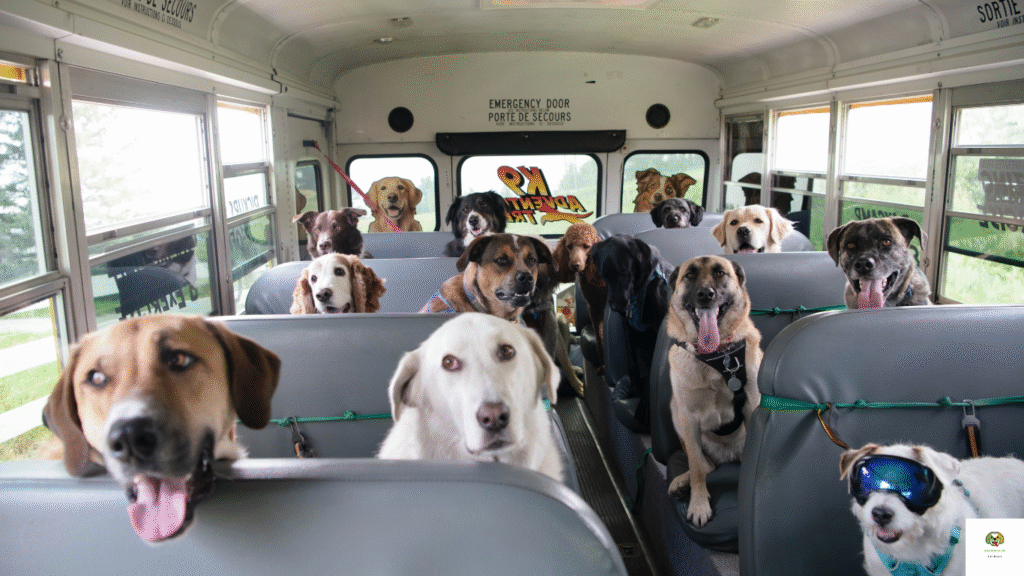
Traveling by bus with your beloved dog is possible, but it takes responsibility and good manners! First, be informed: Different bus companies and states have their own rules. Some allow small pets in carriers or muffs, while others may refuse outright. Always call ahead and have the necessary documents (such as vaccine proof) ready.
Being a responsible owner can make the trip enjoyable:
- Safe control: Always keep your dog on a short leash and under control on the bus and at the bus stop. Crowds can cause panic or excitement.
- Hygiene: Carry pooper bags and sanitary wipes with you. Clean up any mess immediately. Don’t let your dog climb onto the bus seats.
- Respect fellow passengers: Keep in mind that not everyone loves or may be allergic to dogs. Keep your dog calm, refrain from barking or approaching other passengers. Especially on crowded buses, it is your responsibility to respect the space and comfort of others.
With a little preparation and sensitivity to others, you and your furbaby can enjoy a safe and pleasant trip. Travel safe!
Read Other Also
Why does my dog hate me – 10 Possible Reasons and Solutions
FAQ
Absolutely! Whether you can bring your dog on a bus depends on the specific bus company and local rules, but here’s a general guide:
Service Dogs: Legally allowed almost everywhere.
Small Pets: Often allowed if secured in a closed carrier on your lap or under the seat.
Larger Dogs: Usually not allowed on regular city/public buses for safety and hygiene. Exceptions are rare.
Private/Long-Distance Buses: Check their specific pet policy – some allow pets for a fee, often in carriers.
Always check your local bus company’s website or call them directly before your trip! Rules vary widely. Safe travels with your furry friend!
Traveling with your dog on a bus is usually possible, but requires planning:
Check the Policy: Always call the specific bus company first. Rules vary wildly. Many allow small dogs in secure carriers under the seat, but larger breeds or specific breeds might be restricted.
Use a Carrier: Your dog must travel in a well-ventilated, secure, airline-approved carrier that fits under the seat. Label it.
Pay the Fee: Expect a pet fee (often $15-$25 one-way). Book this when you buy your ticket.
Be Prepared: Ensure your dog is calm, quiet, well-exercised before boarding, and has had a bathroom break. Bring water/snacks if allowed. Be courteous to other passengers.
Always confirm details directly with your chosen bus company!
Here’s how to take your dog on public transport easily:
Check Rules First: Always look up the specific pet policy for your bus, train, or subway line before you go. Rules vary hugely!
Leash & Muzzle: Keep your dog securely leashed at all times. A muzzle is often required (even for friendly dogs) and is good practice in crowded spaces.
Avoid Rush Hour: Travel during off-peak times if possible. It’s less stressful for everyone.
Carrier for Small Dogs: Small dogs usually need to be in a secure, well-ventilated carrier on your lap or the floor.
Mind Manners: Keep your dog calm, quiet, and close to you. Sit near doors if possible. Clean up any mess immediately.
Be prepared, be considerate, and enjoy the ride!
Here’s a friendly guide to traveling with your dog:
Safety First: Use a secure crate or dog seatbelt in the car. Never let them roam loose.
Prep & Practice: Get them used to the crate/carrier with short trips before a big journey.
Pack Smart: Bring their food, water, bowl, leash, poop bags, favorite toy, and any medications.
Stay Hydrated: Offer small amounts of water frequently during travel.
Take Breaks: Stop every 2-3 hours for potty breaks, short walks, and stretching.
ID is Key: Ensure their collar tag is current and consider a microchip.
Check Rules: Verify airline/carrier policies or accommodation pet rules well ahead.
Vet Visit: Consult your vet before long trips, especially if they get anxious or car sick.

